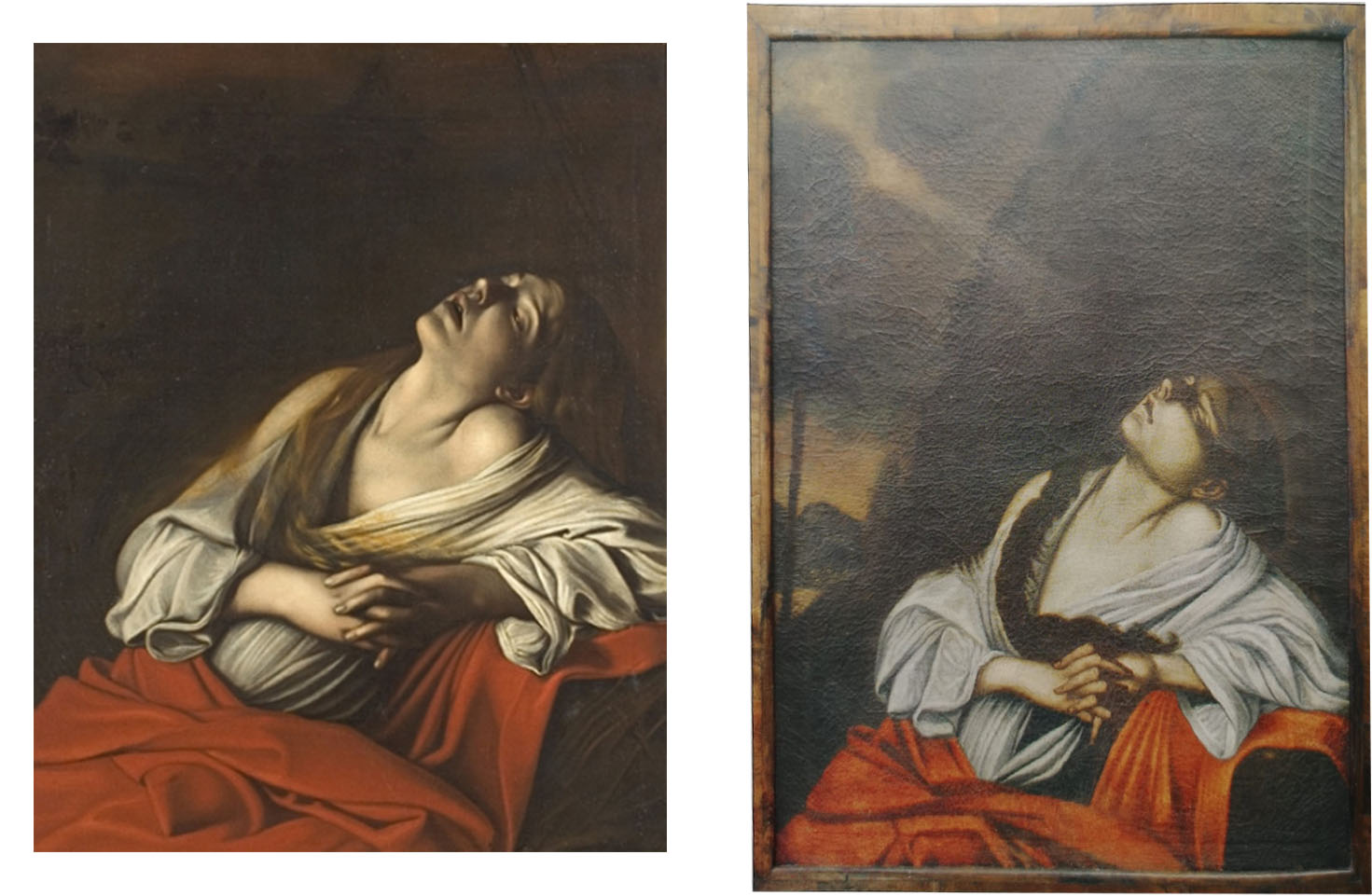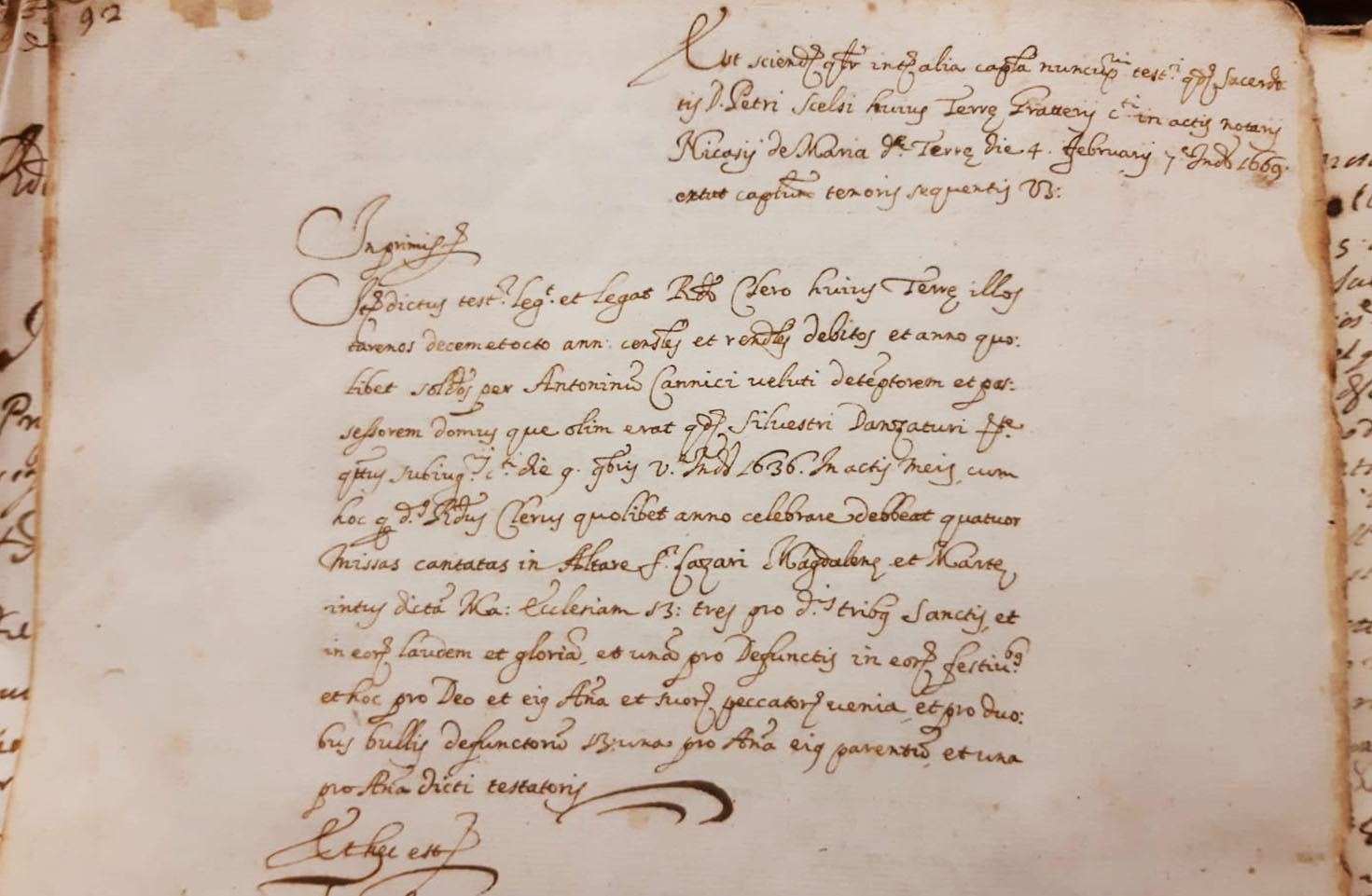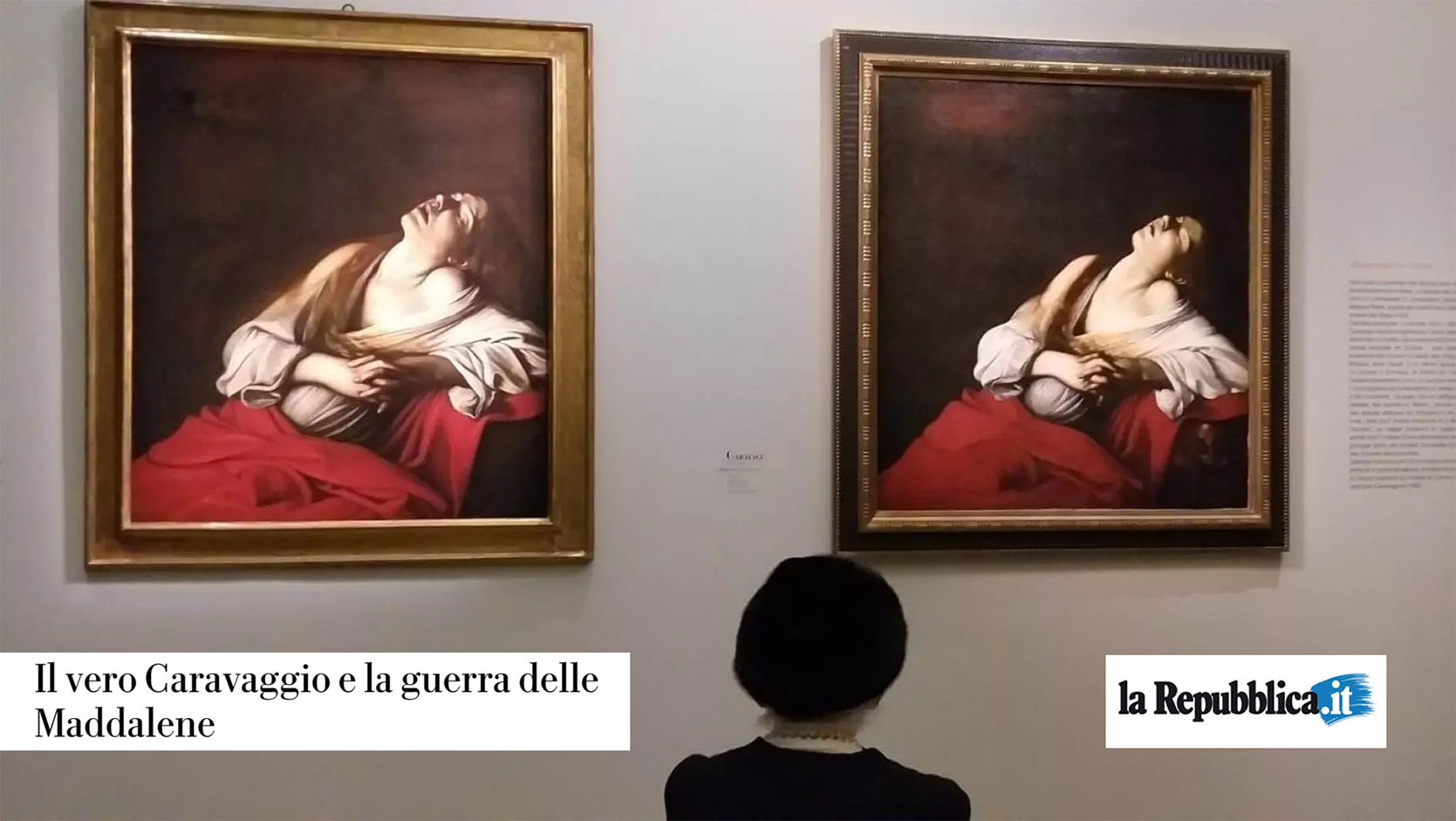Your basket is currently empty!
THE MAGDALENE FOUND – COPY OF THE UNPUBLISHED ONE BY CARAVAGGIO
Imitazione di quella inedita del Caravaggio
One of the treasures that guard the churches of Gratteri has been recently rediscovered, returned to be talked about after a very long oblivion. It is a painting of Santa Maria Maddalena in ecstasy by an unknown sculptor from the 1600s who has recently been causing a lot of discussion as it appears to be similar to another unpublished one, found a few years ago and attributed to Michelangelo Merisi known as Caravaggio (1571-1610).
The story of the Magdalene by Caravaggio, rediscovered after 400 years, has leapt from Repubblica to the front pages of many other national and international newspapers in recent years. The painting, in fact, together with two others, was traveling with Caravaggio just when the painter died, but traces of this were lost.
According to critics, there are at least eight copies of this work: among these, the version kept in the private collection in Rome which was presented by the English art historian John Gash in his monograph on the Lombard painter (“Caravaggio”, 2003). Another copy is kept in the Musée des Beaux-Arts in Marseille. But let’s start from the beginning.

It was October 2014, when the art historian Mina Gregori announced the discovery – in a European private collection – of a Magdalene, which she recognized as the original by Caravaggio on the basis of the technical-stylistic analysis and the presence of a note, with seventeenth-century handwriting, believed to be the autograph of Merisi, bearing the inscription “Madalena reversa di Caravaggio a Chiaia ivi da servare pel beneficio del Cardinale Borghese di Roma”.
The work – now called “Maddalena Klain“, from the name of the penultimate private owners – is an oil painting on canvas (106.5 x 91 cm) attributed to Caravaggio and datable to around 1606, although some critics, including John Spike, lean towards 1610.
According to some sources, the painting was made a few months after Caravaggio’s escape from Rome following the murder of Ranuccio Tommassoni, and in particular during his stay with his protectors, members of the Colonna di Paliano family. During this his brief transfer, the painter made at least two canvases: the Supper at Emmaus and a Magdalene, identified with this work by the majority of scholars.
The head thrown back, the eyes half closed, the mouth barely open, the shoulders uncovered, the hands folded, the hair down, the white of the robe and the red of the mantle. Mina Gregori is sure: “The complexion of the body in varied tones, the intensity of the face. The strong wrists and hands of bruised tones with admirable variations of color and light and with the shadow that obscures half of the fingers are the most interesting and intense aspects of the painting. It is Caravaggio “.
In this canvas, Mary Magdalene is not represented as a woman oppressed by sin, but as a woman already converted, immersed in an ecstatic contemplation, as revealed by the furrowed brow, the eyes as if distorted and the fingers intertwined. A new approach that will influence numerous artists such as Rubens, Simon Vouet (who proved very faithful to the work in his Magdalene in ecstasy, preserved in Besançon) and certainly Bernini in the famous sculptural group, the Ecstasy of Saint Teresa. (“Caravaggio“, 2003).

Coming to the work of the “penitent Saint Mary Magdalene” kept in Gratteri (oil on canvas, 116 x 91 cm), the author, who would appear to be unknown to us, is presumed to have known the work of Caravaggio as the Gratteri canvas would seem an imitation than the original found in 2014.
On its original origin, then, a Revelation of the State Archives of Palermo or a testament of the Reverend Don Pietro Scelsi could help us who prepares the Reverend Clergy of Gratteri to “celebrate the 22nd of July, the day of Sancta Maria Maddalena, a sung mass of four tarì in honor of said Saint of altar of San Lazzaro inside the Venerable Chiesa Madre (suppressed religious corporations of Cefalù – Clergy of Gratteri – V. 105, year 1669).
The work, therefore, could come from the altar of San Lazzaro and Santa Maria Maddalena, which already existed in the year 1669 within the Old Matrix and was then transported at the end of the century XIX, in the Nuova.
Beyond the artistic value of the recently restored work itself (less graceful than the original), its very presence could support the thesis that the original Magdalene was already known in Sicily in the century XVII, if not even suppose that it was built during Merisi’s brief stay on the island between 1608 and 1609. In fact, after the killing of Ranuccio Tomassoni, the son of a fighter of the Catholic legion in the service of the Farnese, Caravaggio was accused of his murderer.
Thus began the years of his inaction, between Naples, Malta and Sicily. Here he will land after an escape from Malta in October 1608, sighted at the loading port of Terranova (Gela). His condition will continue to be that of a fugitive, which is why the well-known painter will begin a journey that will lead him to a continuous wandering among the cities of Sicily in search of a safe refuge.
In Messina, for example, Merisi will perform the Resurrection of Lazarus in the church of the Crociferi Fathers (now in the Regional Museum) which was commissioned by the Genoese Giovan Battista de ‘Lazzari for his chapel, in homage to the name of the family. Beyond exciting conjectures, the canvas of the penitent Magdalene by Gratteri, an imitation of the original, could probably add a further element regarding the knowledge and dissemination of Caravaggio’s works in Sicily in the seventeenth century.

Marco Fragale
(Università di Palermo)
Sitografia:
Pappalardo Dario “È lei la vera Maddalena”. Svelato il mistero di Caravaggio. La Repubblica, 24 ottobre 2014.
Polidoro Federica, Ecco Maddalena di Caravaggio ritrovata dopo 400 anni, Artibune. URL consultato l’11 agosto 2017.
Stoia Nicola, Ritrovata la Maddalena del Caravaggio, in emettiladaparte.com


